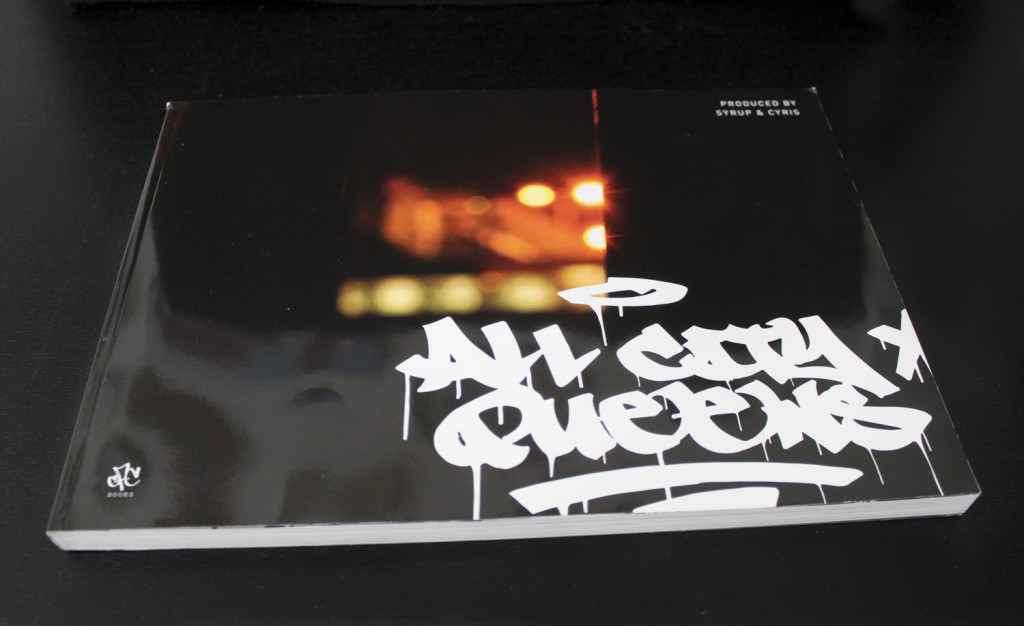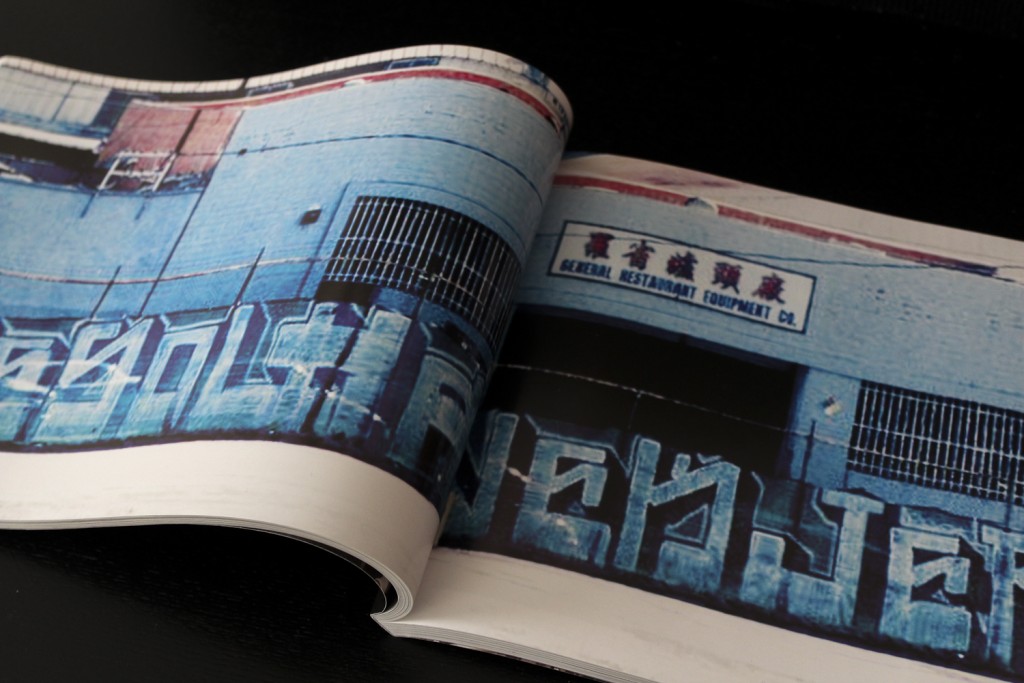All City Queens is a new book about female writers that provides a snapshot of graffiti done by over fifty-three writers from around the world. The introduction declares that “there are no tits and arse shots” which is a bit of a hint at the feminist vein throughout the book. Many of the writers featured create graffiti as feminists and the book aims to address women as participants within the subculture.
Each writer within the book is given a short introduction and a few pages of their work follow. The content featured in the book is mostly illegal graffiti including trains, streets and tracksides, there’s also some legal walls and a smattering of street-art. On the whole the graffiti is from Western Europe, the US and South America although Africa, Australia and Eastern Europe do get a look in too.
Halfway through the book there is an essay by Luisa Herse in which she proposes “a necessary feminist opinion of graffiti”. She examines the example of two female graffiti crews in Mexico to do this. Chulas Klan and Female Soul have challenged what Herse believes is a graffiti culture with a masculine outlook in which there are definite gender roles (i.e. men can and women can’t do graffiti). There is a section explaining the birth of both the crews, why the members felt an all female crew was necessary, and how they have gained from organising in this way. Writers from both crews express their commitment and ability as they feel their male counter-parts too often do not give them the respect they deserve. Herse concludes by drawing a brief comparison between these all-female crews and similar ways that feminist groups have organised in other contexts. The essay raises some important issues and is engaging to read as it is unusual to have such a strong feminist discourse within graffiti. However Herse doesn’t draw any wider conclusions; it would be interesting if she discussed to what extent their experiences are reflective of Mexican culture or if they are more generally representative of wider graffiti culture. Or even how the two crews she discusses may be changing the sexist stereotypes they’re challenging.
As well as the essay by Herse there are interviews with Claw, Lady Pink and Mickey. Claw describes the combative stance of her crew PMS which is unequivocally feminist yet inclusive in its membership. The other two interviewees talk a bit about how they came to graffiti, how it’s changed over the years, and their plans for the future. One part of the Lady Pink interview in particular highlights the differing approaches taken by female writers regarding gender identity within graffiti. Lady Pink describes how she changed her tag from Coke to Pink in order to make it sound more feminine. In contrast Jerk, another writer featured in the book, deliberately chose a tag that didn’t sound feminine in order to avoid her work being judged on her gender.
What I enjoyed reading a lot were the more personal stories in the book such as the profile of Ferkl who took the nickname her Dad gave her as her tag. She describes the trajectory of her artistic endeavours from scrawling on walls with crayons as a child to writing on trains as an adult. Another bit I liked was the section on Illegally Blonde which is made up of a pair of graffers named Ivey and Dsent. They project real enthusiasm and fill five pages with pictures of some well nice trains and walls. Elsewhere tucked away at the end of the Claw interview there is a brief afterword by Miss 17 where she explains how, through her experiences and the friendships she has formed whilst doing graffiti, she came to think of herself as a feminist.
There was a similar street-art book released before that contained some of the same writers and even one or two of the same photos. However that was over a decade ago and since then graffiti and the people doing it have inevitably changed so this new book coming out now is good. In general All City Queens focuses on more of the illegal stuff and is a strong survey of graffiti done by women. It also succesfully addresses gender within graffiti and represents the different opinions of the writers well. As well as being an engaging addition to graffiti literature All City Queens is evidence of greater activity by women in graffiti culture. Later this year there’s also a documentary film about female graffers due to be released that will also be worth checking out.
Finally I’ll end with a nice quote in the book from Hipie:
“ACAB always and LONG LIVE GRAFFITI!”


